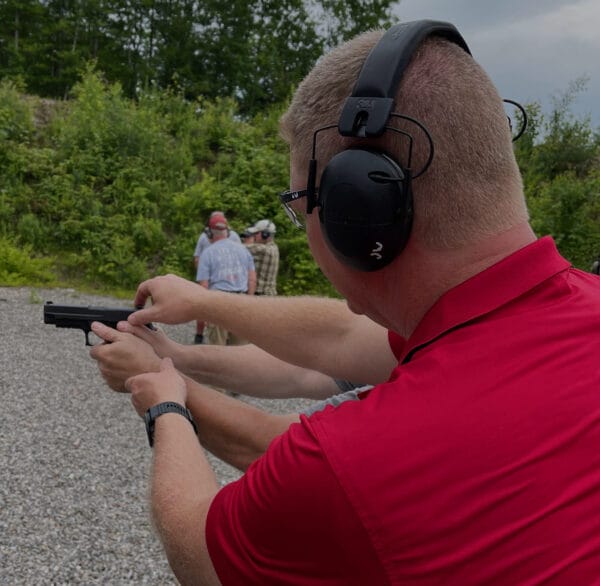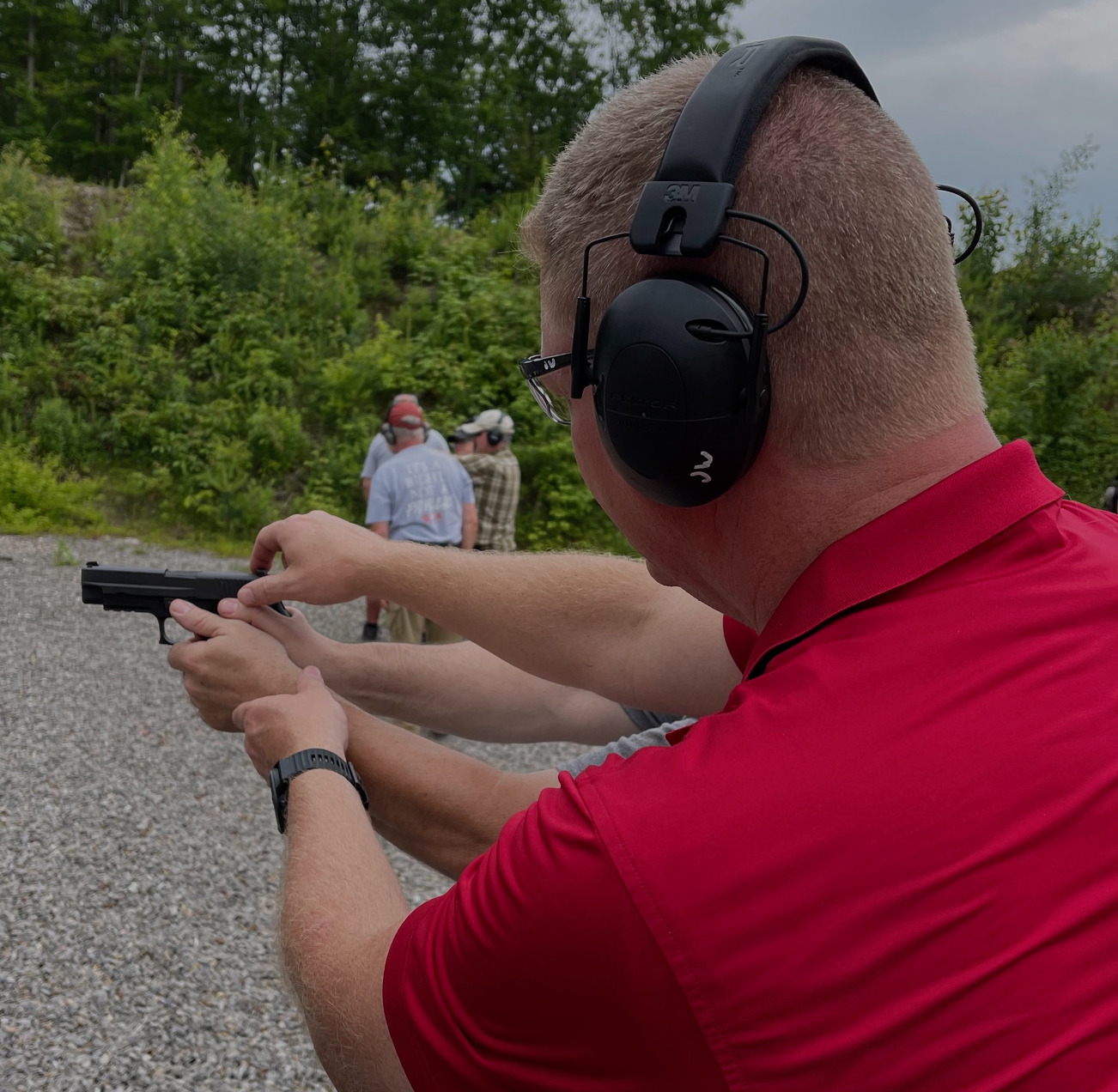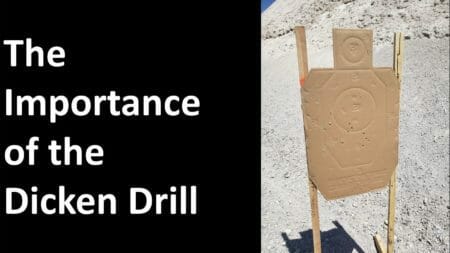
As I’ve previously stated, I’ve very much enjoyed reading the feedback from previous articles that I’ve authored. And, as I would expect, the comments often reflect the mindsets and biases that I’ve come to understand permeate the firearms world. (Note that when I speak of “biases,” I’m not necessarily using it in a negative or condescending manner. We all have biases. It’s simply the lens through which our life experiences and education causes us to see our world and interact with the people and things in it.) I’ve also stated previously that many of the comments could serve (and are, in fact, serving) as the basis for a new article.
In my previous article, I discussed the phases of learning. Specifically, how humans learn motor skills and psychomotor skills, and the accompanying phases of proficiency. In the comments section, this comment appeared:
I’ve chosen to focus on this comment because of its simplicity. However, within its simplicity lies an abundance of training items that must be addressed.
As soon as an article that I’ve written gets published, I’ll send a link out to a number of professionals I have friendships or working relationships with to solicit their thoughts, comments, and critiques. A ‘peer review,’ so to speak. The overwhelming majority of these professionals are like-minded in that they are (a) contrarian and (b) always looking for a better way to present their materials and to become the best instructors/trainers that they can be. They, like me, do NOT accept the status quo. They challenge it. Needless to say, many who read this article also noticed this comment, suggesting that it needed to be addressed, most effectively in the form of an article.
The understanding of the basic science and the processes behind how humans learn and master both motor skills and psychomotor skills is not, and should not, be reserved only for “Education Professionals.” EVERYONE should have, at the very least, a basic understanding of how skills are learned (consolidated) within the human brain. It is by and through this understanding that individuals can assess the efficacy of a training program, accurately gauge their own performance, and understand how their performance can inadvertently deteriorate or mutate over time.
How many times have you heard someone say, “that’s a perishable skill?”
Have you ever thought about why skills “perish?”
Have you ever gotten worse at an activity the more you engage in it?
I’ll begin by addressing the latter first.
There are a number of individuals I work with who schedule quarterly or bi-annual “assessments.” Moreover, many agencies that I work with (contractually) require bi-annual requalification sessions with duty weapons. Others require these quarterly. Is this a mere coincidence? The simplest answer is “no.”
In my experience, there are two primary reasons why motor skillsets require regularly-scheduled ‘tune-ups.’ The first reason is that not enough time is spent engaging in the skills to ever move them out of the cognitive phase, or deep enough into the associative phase. This is the “illusion of learning” concept written about in my previous article. The presumption, because I’ve taken a class, completed the time requirements, and have subsequently been tested or “qualified” to a minimum standard of adequacy, that the information is now “learned” is utterly false. (There’s even a term for this false belief: ‘stability bias.’)
What’s even more interesting, however, is that often spending too much time engaging in those motor skills can create procedural or performance variations; something I like to call a “performance mutation.” This, like so many other factors when it comes to training, is due directly to how the human brain processes information and attempts to create efficiencies in logic and and shortcuts in performance.
Human beings have brains that are wired to recognize patterns. Whether we realize it or not, we are constantly taking in information from our surroundings and comparing them to an internal database of “knowns.” Our co-workers, children, spouses or significant others have known and understood “baselines.” When any of these individuals who we are regularly exposed to behave in a manner inconsistent with what we have established (consciously or unconsciously) as their “baseline,” we notice it. We may not be able to articulate exactly what the difference is, but we know something is different or ‘off.’ The clinical term for this is “schema.” LEOs often refer to this as “JDLR,” an acronym for “Just Didn’t Look Right.”
“Heuristics” is a clinical term that describes the mental short-cuts that humans develop as a means of creating faster and more efficient problem-solving methodologies.
Often, schema and heuristics go hand-in-hand. We recognize patterns, and subsequently we adapt or modify the way in which we deal with situations or perform physical tasks.
Anyone who has spent any time in the aviation industry is most assuredly aware of a concept called “procedural drift.” A noted safety-culture researcher, Dr. Stian Antonsen defines procedural drift as the difference between “work as imagined and work as it is actually done.” Taking this concept even further, sociologist Dr. Diane Vaughan, in her 1996 book, The Challenger Launch Decision, analyzed why NASA permitted launches with defective O-rings to continue despite the likelihood that a disaster was ultimately inevitable. Normalization of deviance, in her words, is “The gradual process through which unacceptable practices or standards become acceptable. As the deviant behavior is repeated without catastrophic results, it becomes the social norm for the organization.” The deviance spreads throughout the organization, infecting not just current employees, but new ones too: “We’ve always done it that way.”¹
Professional duty carriers are required to requalify, at a minimum annually, due two factors: (1) to assess the basic capacity of the employee to perform a series of motor and psychomotor skills (in this case, the safe and effective handling and discharge of a handgun) to a minimum standard of adequacy, and (2) to correct any normalization of deviance or procedural drift which has inadvertently crept into the individual’s motor skill performance repertoire.
IT IS THIS VERY REASON why training audits are ESSENTIAL to professional duty carriers. And it is for this very reason as well why training audits for the armed private citizen or defensive hobbyist are so critical.
As I mentioned earlier in this article, I have a number of private students who schedule two to four-hour training audit blocks with me on either a quarterly or bi-annual basis. More often than not, through professional guidance, the student is able to identify, isolate, and correct errors that have “crept” into their procedures. What’s amazing to me is that, since these are errors that have developed out of the brain’s desire to utilize heuristics to create a more logical and efficient ergonomic or procedural process, the student is completely unaware of the performance mutations.
(Think about it this way: I inadvertently modify or change one technique, which causes a variation in the desired outcome, which causes me to make subtle or slight changes to another technique in order to compensate for the variation created by the initial modification. It creates a cascading effect, and the results are rarely positive. Moreover, since I am creating the variation, I am unable to recognize the drift from the standard because it is ever so slight. You’ll hear this referred to as “change blindness.”)
When mentoring instructors, I often pose this concept in the context of a personal vehicle. If practice guarantees perfection, then driving a car more should make it run better. Deterioration due to usage, commonly called wear-n’-tear, can only be rectified through regular inspections and tune-ups. Similarly, I would encourage anyone who works with firearms for professional, personal protection, competitive, or even recreational purposes to seek out high-quality instruction from vetted, properly credentialed instructors and master trainers who can perform a disciplined, logic and performance-based training audit.
Challenge yourself. People often avoid visiting their auto mechanic because they are afraid of receiving bad news. I suspect that the reason many avoid attending a training audit is because the truth would shatter their biased belief that they are ‘great shooters’ with ‘solid skills’ using ‘proven tactics.’
About Keith Hanson
Keith Hanson is a seasoned law enforcement professional specializing in firearms instruction, tactical operations training, and counterterrorism tactics. With a strong background in neuroscience and psychology, Keith is a co-creator of the innovative NeuralTac™ system. This methodology combines neuroscience, combat psychology, neuropsychology, kinesiology, and educational sciences, drawing from the latest research in human performance, to produce advanced instructional programs for law enforcement agencies and private security firms. It also aims to develop and foster advanced-level master trainers within those organizations. Additionally, as a certified force science analyst, Keith serves as a court-recognized expert witness on use of force matters and provides consultation on legal strategies.
X (Twitter): @theguncoach









Being professionally trained on the use of handling a gun is never a bad thing and the right type of practice makes perfect. I liken it to bowling or drifting a car at 90 mph in the corner on dirt. Any sport applies. Mentally, the more puzzles you do, the better you get at doing them. Keeps you sharp too.
Trump 2024
All the technical training in the world does little good if you don’t have situational awareness and the right mindset. Something that vast number of firearms carriers lack. I see it almost everyday with people I can tell are carrying with their heads down and faces buried in the phones.
I would like to say that people carry under different lifestyles. The people you describe here generally have time for, or are paid to undergo, auditing. Others self audit as best they can with what they have. My 1911 has not had grips on it for a year now. I am looking for the time to finish them out and put them on. The blanks are in a tin can somewhere in my shop. I built an AR15 in 7.62×39 and carried it for several years in my car before I had the time, other than the initial firing to… Read more »
Hanson, did you really mean to write “semi-annual” (every 6 months) instead of “bi-annual” (every 2 years)? Remember, it was the bi-centennial celebration in 1976, not the semi-centennial. I’m not fond of your driving analogy. Would you ever warn a customer that getting any more training will wear out his gun or deplete his ammunition supply? Driving more can make you a better driver. If you watch an auto race the drivers practice as much as they can. The engineers change the set-up on the car to make it faster and the drivers learn the track. The latter with guidance… Read more »
Both are correct. It comes down to context.
biannual \bye-AN-yuh-wul\ adjective. 1 : occurring twice a year. 2 : occurring every two years.
I, quite reluctantly, stand corrected but will continue the practice of using the unambiguous semiannual to mean every six months or twice a year and adjust to using the correct biennial for every two years.
Thank you Mr. Hansen for yet another thought provoking article. You mention things that are truly beneficial to me. Living in such a time that a carrier could and would get sued into oblivion for even the slightest error, knowing and practicing solid techniques are essential.
Your a very solid edition to the stellar lineup of content producers here at what I consider the preeminent gun publication, Ammoland.
Most problems occur at night. Therefore, how proficient are shooters at night fire? Usually not very. Most shooters only surface on dry sunny days. What about arctic weather or heavy downpour conditions? Do shooters remember to acclimate themselves to those? And during chaotic action sequences weapons often get dropped. Will your weapon survive a hard fall to the concrete? And how well does your weapon and other gear hold up under stress conditions? Or is it made of plastic? Ever notice that weapons behave differently when drenched in human perspiration? The Marines in Fallujah faced a 131-degree temperature extreme. Think… Read more »